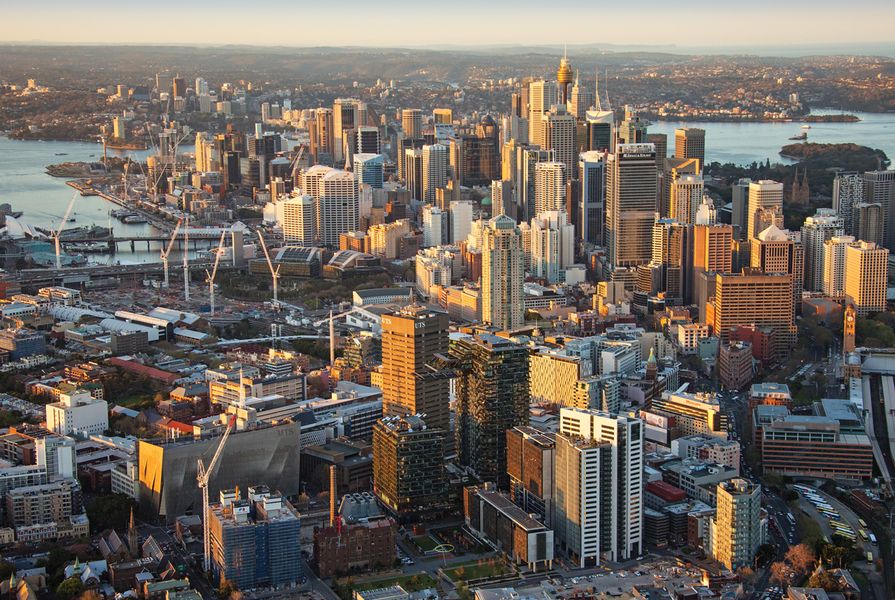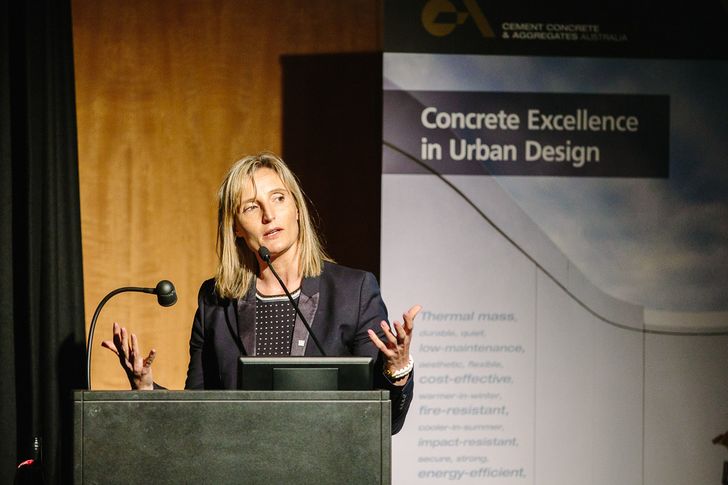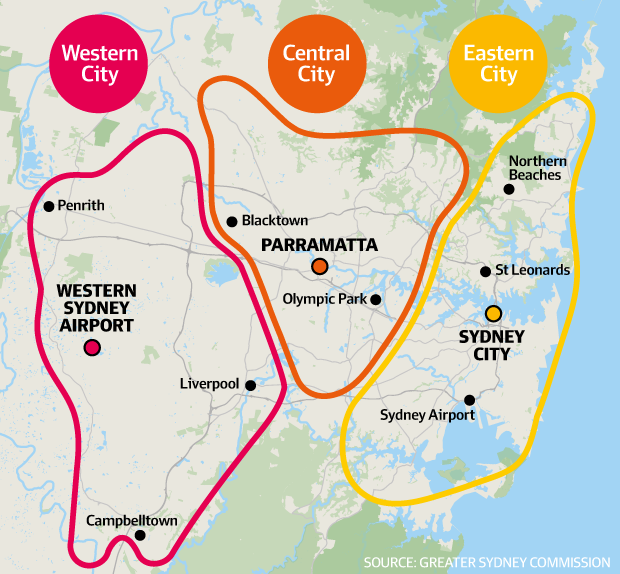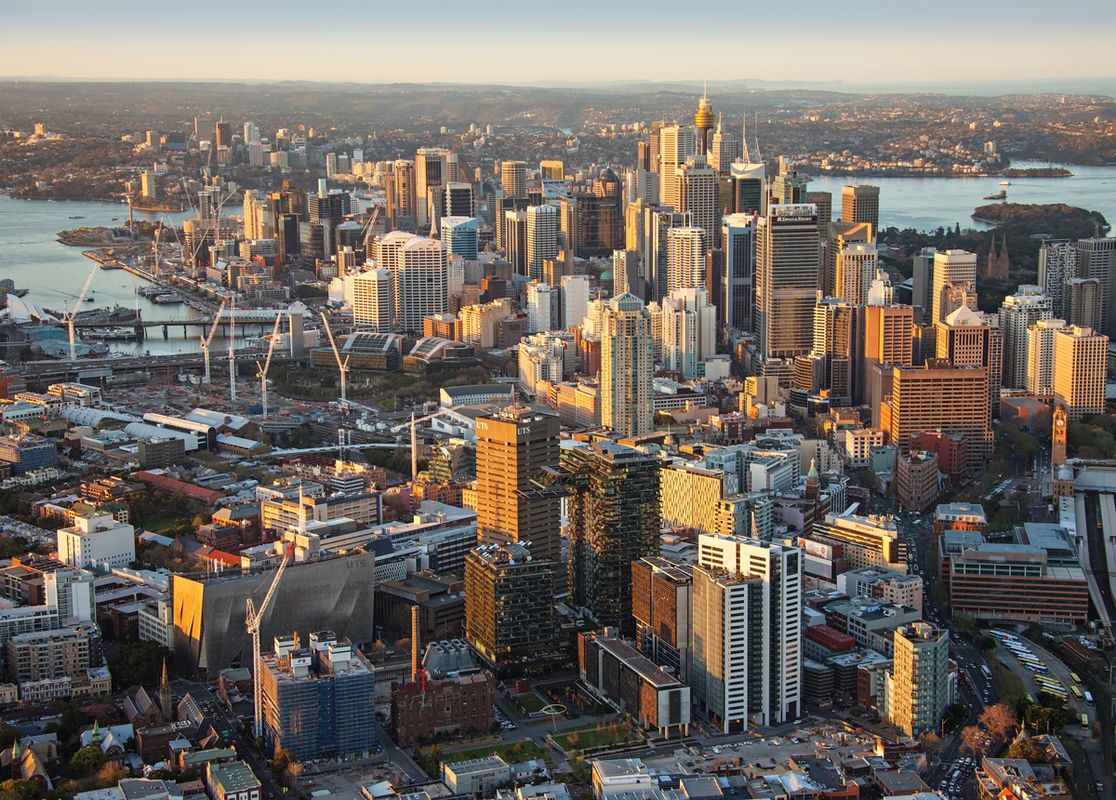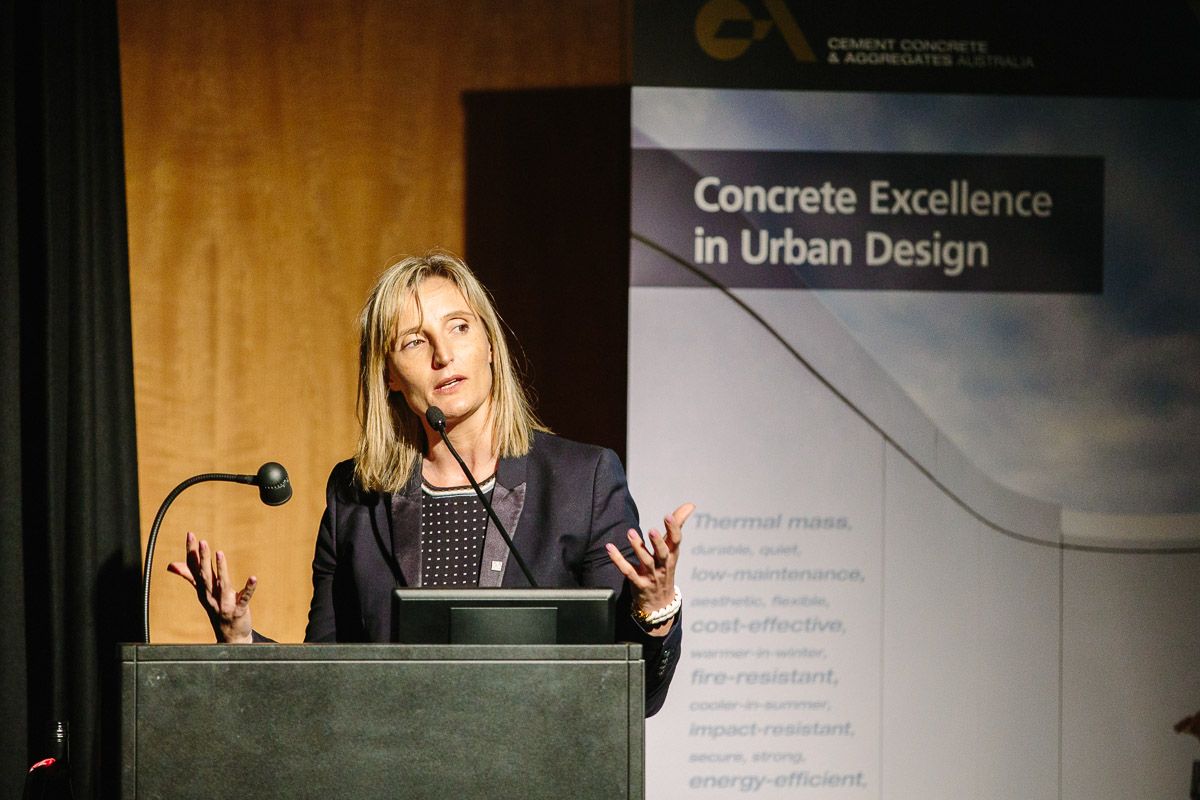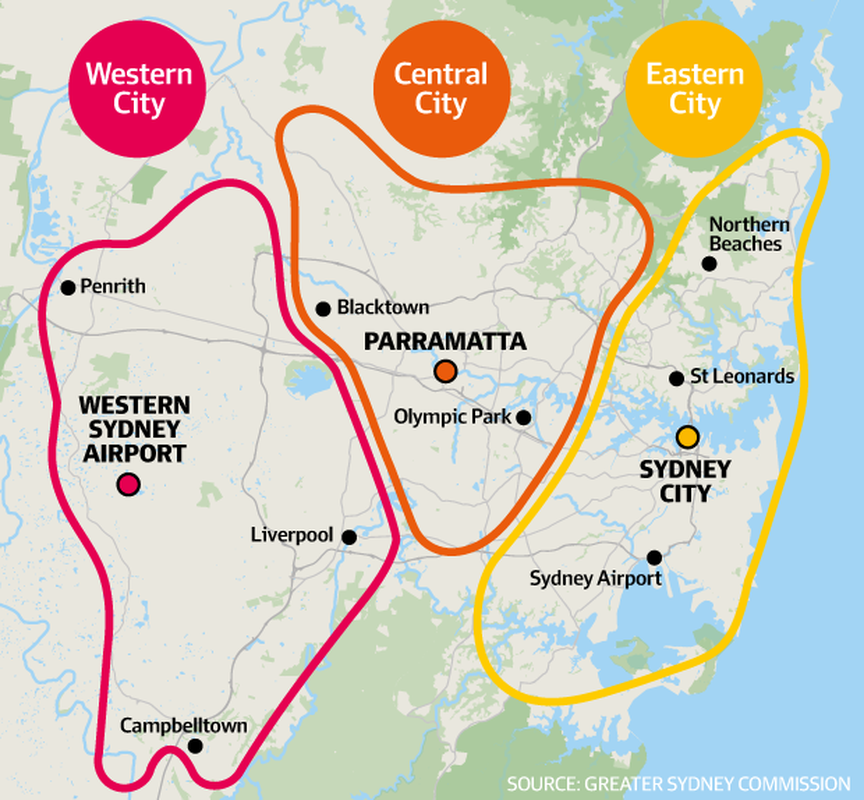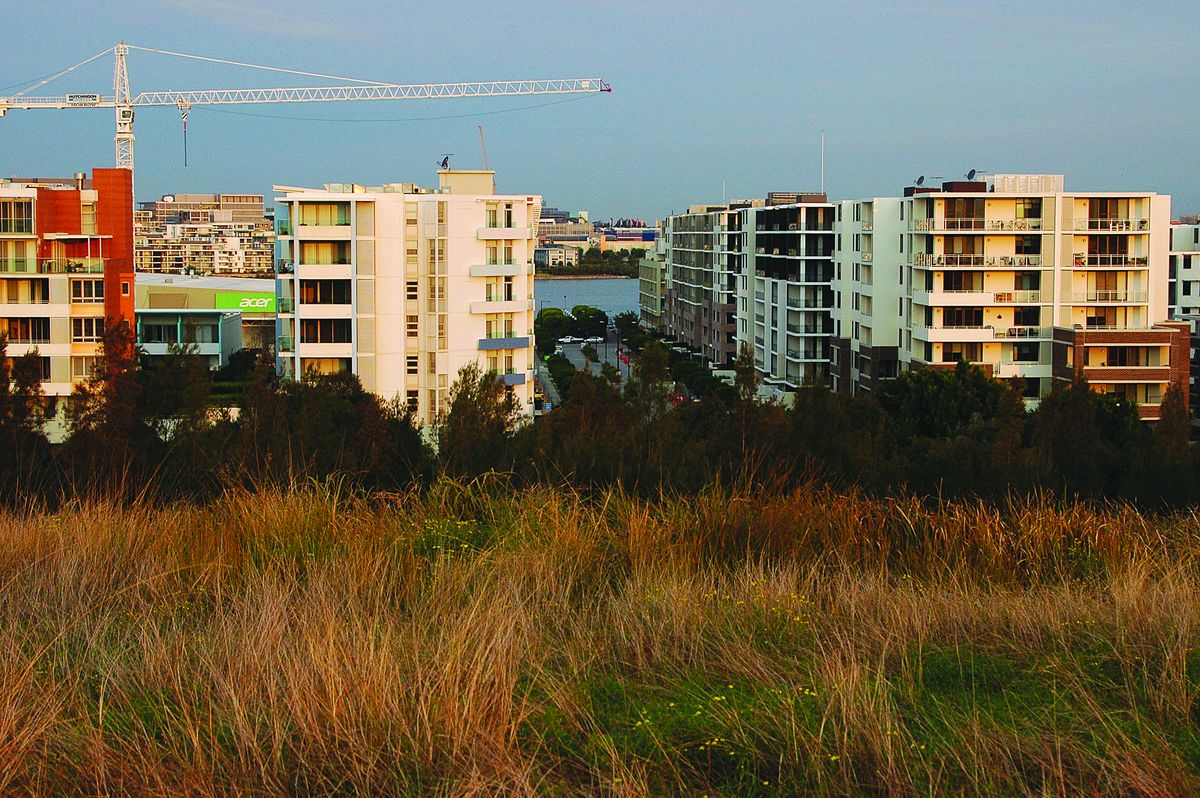It is a great honour to give the 2016 Kemsley Oration. I must say, being a New South Welshwoman I didn’t know a lot about Sir Alfred Kemsley prior to the invitation to speak so, in the tradition of all good research for speech making, I googled him. I found that Sir Alfred, best known for his contribution to town planning, was, first and foremost, interested in his community and how people lived, and he became increasingly more so over his 91 years. He was involved in social and economic policy, civic affairs and environmental protection.
I found that Sir Alfred was the Secretary of Melbourne’s Metropolitan Town Planning Commission in the mid to late 1920s, and was on the Victorian Town and Country Planning Board for over 20 years. As the inaugural CEO of Greater Sydney’s first Commission I feel a warm liking to him already. I want to honour Sir Alfred by speaking on a subject he pioneered – planning for the economic, environmental and social wellbeing of people. I will refer to it in my oration as the traditional triple bottom line approach of planning.
I would also like to use the oration as a PIA ‘bridge’ with our colleagues in NSW to whom I was speaking at a conference on the topic of ‘game changers’. Drawing the two together, I would like to discuss my thoughts on the merits of good old fashioned and steady triple bottom line approaches to city planning – as in the case of Sir Alfred – together with today’s drive for quick and major ‘game changers’ for cities.
Sarah Hill, CEO of the Greater Sydney Commission, delivers the 2016 Kemsley Oration at the Australian Urban Design Awards held in Melbourne in October 2016.
Image: Kit Haselden
The concept of game changers
The concept of game changers resonates very strongly with me in my new role as the CEO of the GSC, a new organisation charged with doing the big picture planning for Greater Sydney. The GSC was introduced by the Minister for Planning Rob Stokes earlier this year as a major game changer for Greater Sydney. He referred to it as the first major deliverable in the State’s long anticipated game changer of planning reform that has been in process since 2011, and in which PIA NSW has been significantly involved.
In a recent Macquarie University lecture, Minister Stokes advised that the creation of the Commission was an attempt to:
- overcome the systemic failure of past local and state governments to integrate transport delivery and land use planning
- engage state and local governments in planning through a balanced bottom-up and top-down approach, and
- operationalise ecologically sustainable development.
Importantly the Commission was the product of bipartisan support – both the Government and the Opposition supported the carriage of our legislation – which may be considered a planning game changer in its own right.
The legislation transferred some major Ministerial responsibilities for regional planning to the Commission including the powers to ‘make’ District Plans as well as regionally significant planning decisions. The Commission was also given 24 priorities to achieve in its first year, one of which was to prepare a list of actual game changers for Greater Sydney.
Many believe our structure can also act as a game changer for the success of planning in Greater Sydney. In this context we have 13 Commissioners. Three represent the triple bottom line approach: Economic Commissioner Geoff Roberts; Environmental Commissioner Rod Simpson; and Social Commissioner Heather Nesbitt. Six are District Commissioners, representing Greater Sydney’s six districts, who will not only lead planning in their districts, but will chair the Sydney Planning Panels which will be initiated in a month. This means our District Commissioners, who were chosen by locally elected officials, will chair panels that will determine regionally significant development applications and undertake rezoning reviews.
Absolutely key to better integration horizontally within State Government are our three Commissioners who are also the Secretaries for Planning, Treasury and Transport. And overseeing all is our independent chair and Chief Commissioner, Lucy Turnbull.
Significantly, the big budget departments of Health and Education are also involved in important decision making through the Commission’s Infrastructure Delivery Committee. The Infrastructure Delivery Committee brings together these key departments of government to work in an integrated and collaborative way about what infrastructure Greater Sydney needs to support its growth, liveability and prosperity. Our research indicates that we are the first organisation of our kind to include all of these agencies on our official committees so as to better integrate the matters that significantly influence the success of planning our cities.
I know many of us have seen new planning organisations and government authorities come and go – each one considered a game changer and the solution to all of our woes. In my own career I have created two, merged two and canned one. In reality, the GSC won’t be able to solve world peace. But it is designed and staffed by passionate people who care about planning our city right from the start – from the strategic planning stage – and implementing a vision over time: a group of people who are going back to the principles of good old fashioned planning that is based on a more recent concept of ecologically sustainable development.
In this way it does take us back to the roots of good old fashioned planning and Sir Alfred Kemsley – preparing an evidence-based planning, scenario testing and creating a long-term plan for our cities. At the Commission, I am building a culture of excellence in strategic planning and a positive and proactive approach to planning for the future of Greater Sydney. This is one of the most important game changers.
Be the game changer
The recent PIA NSW conference had a tag line – be the game changer. It is on this topic that I would now like to reflect on some of my past roles and the importance of us taking responsibility and action for our cause. I share with you my experience in creating an earlier planning authority – the Joint Planning Authorities Team for the London Olympic and Paralympic Games and, most importantly, creating its legacy. In my experience this was a project that defined me. One that required urgent action – we had six months to prepare the masterplan and get planning approval – and one that required great responsibility given the scale and nature of the communities affected.
But the real challenge began with the need to create and retain a legacy. We knew this was pivotal to the success of the Games and something we had to start from day one. Now it is relatively easy to plan for an Olympic and Paralympic Games. The International Olympic Committee gives you a bid book with its requirements – one Olympic stadium, a velodrome, etc. The real challenge was to use this catalyst as a long-term game changer for East London – a game changer for one of the most impoverished communities in the UK with whom I worked.
Today you can see the legacy for yourself. New parks, rail connections and major urban renewal have occurred, but what I am most proud about is the new energy it has created for East London. I also love the concept of ‘convergence’ created by the four local councils that share the Olympic Legacy site. This concept sought to raise the standard of living in the four Boroughs through not just attracting new wealthier professional residents, but by raising or converging the living and education standards of the existing residents.
Back in our own backyard, the Government has recently announced the new Sydney Olympic Park Master Plan 2030 which continues to strive to build on the Sydney Olympic Games legacy providing up to 10,000 new homes for about 22,000 new residents and up to 16,500 new jobs.
Why does Greater Sydney need game changers?
Looking more broadly at Sydney, I refer back to the role of the Greater Sydney Commission and the fundamental question we need to ask: why does Greater Sydney need game changers? To me the case is compelling. This is a case I would like to encapsulate and share with you through some simple statistics:
- Greater Sydney will grow from a population of 4.3 million in 2011 to 6.4 million by 2036. That is over 2 million extra people over 20 years or a 44 per cent increase compared to a 10 per cent population increase in New York City over the same period.
- If current trends continue, by 2036 over 50 per cent of Sydney’s population will live west of Parramatta.
- Where we were planning on 664,000 new homes in Greater Sydney by 2036, revised population data now says we need 726,000 new homes.
- Our current baby boom means we will need an extra 5,450 classrooms 2031, 4,050 of them will be needed west of Parramatta.
- Currently the cost of purchasing a house in Sydney is about 13 times the average household income. The cost to purchase a unit in Sydney is about 8 times the average household income.
- 25 per cent of children between 5 and 18 are considered to be above a healthy weight – of those 18 per cent are overweight and 7 per cent are obese.
- By 2020 congestion on our roads will cost Greater Sydney in the order of $8 billion.
These are concerning statistics that signal the scale of the game we need to change.
In this context I would like to share with you the results of research we have been considering by Geoffrey West of the Santé Fe Institute for America. West’s research investigated what happens when a city doubles in size. I thought this might be of interest to many of you who are planning Melbourne which is a city that is also anticipated to be growing at a significant rate. In short, West concludes that when a city doubles its population – no matter what starting point – there are generally four laws it follows.
- The first law is that you get improved efficiency – for example utility infrastructure such as the electricity network becomes more efficient.
- The second law is that the city gains a dividend – doubling a city’s size gives it a productivity boost of around 15%.
- The third law is the number of jobs per capita generally stays the same.
- The fourth law relates to challenges – specifically a proportional increase in crime.
This research is particularly pertinent to the Commission as our city is planned to double in size to eight million people by 2056. It also resonates strongly given that in a recent poll of Sydneysiders: the number one concern voiced in the context of our growing city related to crime and safety. This is not what we anticipated despite the research.
So how are we changing the game in Greater Sydney?
The Greater Sydney Commission has outlined a three-cities approach for Sydney’s future, Eastern City centred on the CBD, Central City centred on Parramatta and Western City centred around a new airport in the west.
Image: Greater Sydney Commission
On the basis of these statistics, Greater Sydney needs both game changers as well as a strong foundation of triple bottom line planning. Accordingly, at the Commission we are doing both. As referenced earlier, one of our priorities is to prepare a list of game changers. For our purposes we have defined them as “a disruptive project or reform which will change the structure or function of the city, unlock increases in employment and/or housing, and contribute to making Sydney a more productive, liveable and sustainable city”.
Importantly by our definition, game changers can be bits of kit such as a new rail line, as well as policy or regulatory reform such as affordable housing or residential tenancy policies. To date we have received over 96 suggestions for game changers from State Government agencies alone. In addition to these game changers we think Greater Sydney’s current structure needs a rethink. We have inherited the challenge of a single CBD on the eastern seaboard of Greater Sydney. This structural approach is not sustainable as the population grows given the sheer volume and number of people that would be required to traverse across the city in one direction to work and for services. This approach is already creating significant congestion and health costs.
Accordingly we are designing a new spatial paradigm for Greater Sydney, one that focuses on planning for three great cities that collectively define Global Sydney. We refer to these cities as: the eastern city which is Sydney’s current CBD; the central city which is Greater Parramatta and the Olympic Peninsula; and the Western city – a city to be built around the Western Sydney Airport. By this new configuration, we’re looking to turn Sydney from an eastward facing city to one that looks both east and west from a central heart at Greater Parramatta. In addition to this geographic dimension, we are layering our city with an economic, social and environmental story. That is a layer of:
- Productivity which centres on the catalytic and agglomeration benefits of our three cities,
- Liveability which considers the mosaic of great places that combine to create Global Sydney, and
- Sustainability that binds together in a green and blue grid of open spaces and waterways.
This narrative also has an important temporal element starting from today in 2016, planning to 2036, with a strategic vision to 2056.
Looking forward without forgetting where we have been
In summation, I believe my role as the CEO of the Greater Sydney Commission is to balance the need for major shifts in the thinking of our city with the tried and tested planning practices of preparing evidence, testing scenarios and assessing the economic, social and environmental implications of change.
In this regard I would like to conclude with a quote that I draw a lot from in my day to day work, and one that ironically harks back to the days of Sir Alfred Kemsley. It is taken from the Preface of the 1948 Planning Scheme for the County of Cumberland NSW:
“It is not a vaguely idealistic plan. It has been based on proven facts, and if its authors have looked upward to the stars they have kept their feet upon the ground. We feel that it is a common sense scheme, practical in its economics and finance.”
To me it epitomises the healthy tension we as planners face in planning the significant growth of our great cities of Sydney and Melbourne – the need to think big about game changers while keeping firmly rooted in our realities and planning practices.
In 2016, the PIA Kemsley Oration was co-located with the presentation of the Australian Urban Design Awards. The Australian Urban Design Awards is convened by the Planning Institute of Australia and organized by Architecture Media.
The awards program is supported by nine peak bodies from across the built environment – the Planning Institute of Australia, the Australian Institute of Architects, the Australian Institute of Landscape Architects, Green Building Council of Australia, Australian Sustainable Built Environment Council, Consult Australia, Engineers Australia, Urban Design Forum and Government Architects Network Australia.
For more on the Greater Sydney Commission see Greater Sydney Commission unveils 40-year plan for Greater Sydney
This article originally appeared in Planning News, Volume 42 No.10, November 2016.

